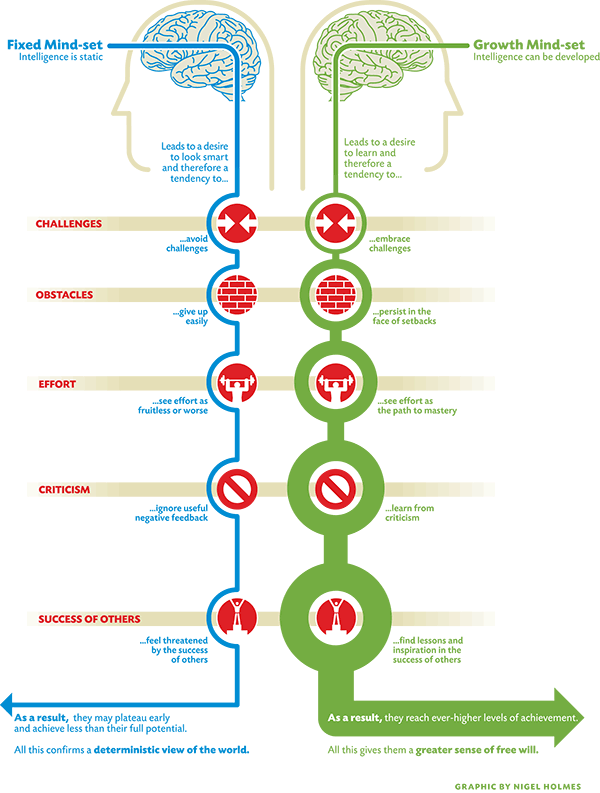5313 Bibliography via Zotero Reference Manager
Required Text:
Brown J. S. & D, Thomas. (2011). A New Culture of Learning: Cultivating the imagination for a world of constant change. CreateSpace Independent Publishing Platform. ISBN 1456458884
Dweck C. (2007). Mindset: The new psychology of success. Random House. ISBN 0345472322
Wiggins G. P. & J. McTighe. (2005). Understanding by Design, Expanded 2nd Edition. Pearson. ISBN 0131950843
Please note: Understanding by Design should be used as a reference book so we will only be using the Introduction and Chapters 1 & 3.
Week 1
Read – full book
Brown J. S. & D, Thomas. (2011). A New Culture of Learning: Cultivating the imagination for a world of constant change. CreateSpace Independent Publishing Platform. ISBN 1456458884
Week 2
How People Learn: Bridging Research and Practice – How People Learn.pdf (Accessed through course BB site)
– Read the Introduction, Summary and Key Findings of the report
What Teachers Should Know About Learning Theories – Great starting point to get a general overview of the 4 major learning theories.
http://kb.edu.hku.hk/learning_theory_history.html
Learning theory: models, product and process In the Learning as a process – learning theory (section toward the bottom of the page) review the four linked orientations to learning: behaviourist, cognitive, humanistic, and social/situational. Also make note of the Four orientations to learning (after Merriam and Caffarella 1991: 138) table.
http://infed.org/mobi/learning-theory-models-product-and-process/
Learning Theories.com Knowledge base and webliography – WARNING this is a commercial site filled with too many adds. The only reason I am including this resource is that their first page offers a very good top level breakdown or hierarchy of all the learning theories or paradigms and the subdivisions within those categories. This site can help you understand where your thinking about learning fits.
http://www.learning-theories.com/
Learning Theory Database – Another resources that points you to all the different resources.
http://www.instructionaldesign.org/theories/index.html
Learning theories and online learning – Great starting point for exploring what learning theories work best online or in a blended format. There is a link to Tony Bates free ebook and the full chapter on Learning theories that should also be explored
http://www.tonybates.ca/2014/07/29/learning-theories-and-online-learning/
Four keys to understanding learning theories – Provides an overview of the main learning theories and how to approach exploring them.
https://www.harapnuik.org/?p=6344
Beyond information pumping: Creating a constructivist e-learning environment
https://repository.nie.edu.sg/bitstream/10497/4735/1/ET-42-5-48_a.pdf
Learning theories for the digital age
http://steve-wheeler.blogspot.ca/2013/05/learning-theories-for-digital-age.html
Connectivism: A Learning Theory for the Digital Age
http://www.itdl.org/journal/jan_05/article01.htm
Authentic Learning: A Practical Introduction & Guide for Implementation
https://projects.ncsu.edu/meridian/win2003/authentic_learning/
Week 3
Mapping your Learners Journey – https://www.harapnuik.org/?p=6420
Self-Directed Guide to Course Design – Fink Summary.pdf (Accessed through course BB site)
Week 4
Read: Introduction, Chapters 1 & 3
Wiggins G. P. & J. McTighe. (2005). Understanding by Design, Expanded 2nd Edition. Pearson. This text will be referred to as UbD
Read: Chapters 1 – 4
Dweck C. (2006). Mindset: The new psychology of success.
Week 5
Read: Chapters 5 – 8
Dweck C. (2006). Mindset: The new psychology of success.
Fixed Vs Growth Mindset = Print Vs Digital Information Age – https://www.harapnuik.org/?p=3627
Is “Have a Growth Mindset” the New “Just Say No” – https://usergeneratededucation.wordpress.com/2015/09/04/is-have-a-growth-mindset-the-new-just-say-no/
Review the resources on: Mindset site – http://mindsetonline.com/



































